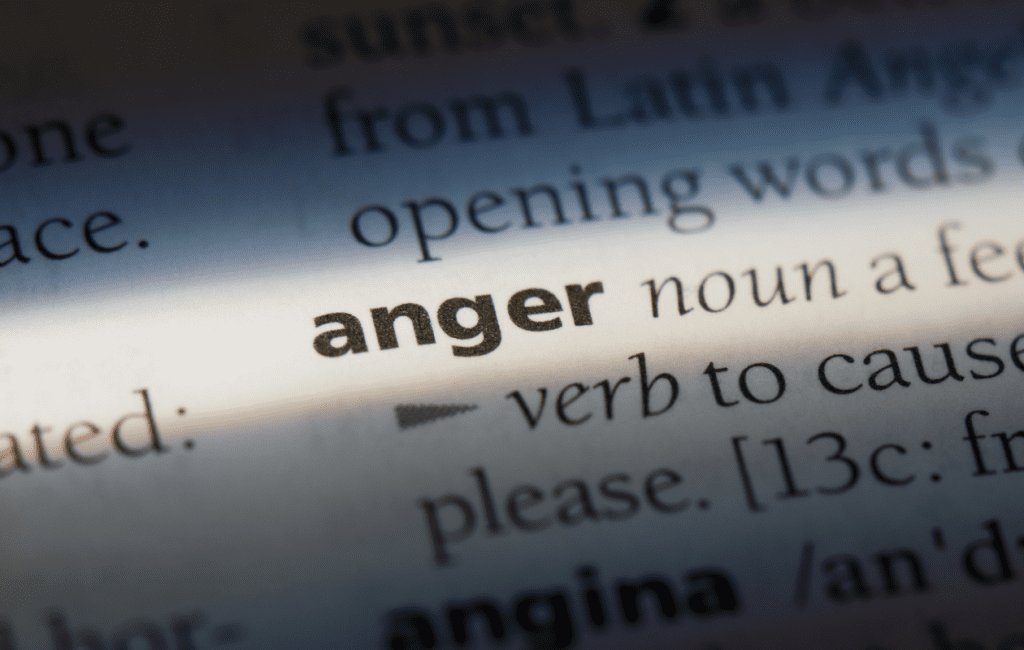Written by Laura Brook, RSW, MSW, Counsellor and Certified Expressive Art Therapist
Have you been told “anger is bad”, or “people who are angry are out of control”, or “if you express your anger, you will be rejected”?
Anger Gets a Bad Rap
Anger is actually a healthy response to having your boundaries crossed – telling you what is ok and what is not ok. For example, anger teaches you about injustices and tells you that racism is not ok.
Anger is a primary emotion that is wired into your brain to protect you. Think of it as “your bodyguard that protects the more vulnerable parts of you that have been hurt in the past” (Dr. Gloria Lee).
It is helpful to understand that anger can put your body into a state of fight or flight. It is a survival response to real or perceived threat.
Anger is not the problem. What we do with it is!
Many of us are not taught how to deal with our anger in a healthy way. Rather, we’ve learned two ways to avoid our anger.
- Suppression (anger inward) – can look like pushing anger down, avoidance, self-loathing, self-shaming, and passive-aggressiveness. It doesn’t work, the anger does not go away but rather you become exhausted and suppressing anger can lead to poor health outcomes. For example, bottled up anger is connected to a higher risk of self-harm and heart disease.
- Explosion (anger outward) – can look like unloading on someone, telling someone off, blaming, shaming, bullying, and aggressive or abusive behavior. You often become even more sensitive to the anger and have stronger reactions to what you are avoiding. For example, if you are feeling angry and not heard at work, you might come home and yell at your children when they don’t listen. This unprocessed anger can be projected onto another.
HEALTHIER EXPRESSIONS OF ANGER
If suppression or explosion are unhealthy ways to deal with anger. What is healthy?
The best way to process anger is to EXPRESS OUR ANGER BY GOING THROUGH IT.
Notice how anger feels in your body. What happens to your head, heart, belly, hands, and feet when you feel angry?
Here are some healthy ways to express your anger:
1. Get active
Hit a ball or exercise to help discharge the increase in stress hormones known as adrenalin and cortisol.
2. Write out your anger
Get a paper and a pen to write the details of how you feel. This can help release tension and literally give you the opportunity to pull what is within and put it on paper. The process of creating can allow you to have space from the psychological material that might overwhelm or saturate you.
3. Sing out your anger
Listen to music that carries anger with it. Use your voice or any musical instrument you are drawn to. Singing not only lowers cortisol, but releases endorphins and oxytocin which can help process anger and lower anxiety.
4. Move your anger through your body
No dance skills required. Dancing not only dispels activation, but movement can access the unconscious parts of the brain, allowing the body to process through embodiment. As you feel the inner sensations, you may notice the sense of agency of movement and learn to connect and trust your body.
5. Draw or paint your anger
Take a piece of paper and colorful crayons and draw or paint whatever comes to mind. Verbal language contains limits to expressing the range of emotions and experiences we have. Through art, emerging images evolve by moving them through various art mediums, thus finding clarity and precision of feeling and thought.
6. Playful expressive arts activity
Create an image of your anger as a character.
- What facial expression does it have?
- What does the anger wear?
- What does it say?
- Perhaps create another character for anger to dialogue with.
There is no right or wrong way of creating your image of anger. Explore with curiosity and see where this exercise takes you.
Art can act as a container, a resource to bring comfort, and means of distancing from intensity. Furthermore, trauma research has pointed to playfulness and creativity as key to healing.
Together let’s change the negative messaging around anger and remember that anger often has the purpose to prime us to assert ourselves and remove obstacles.
In reflection of International Women’s Day last month, let’s break the stereotype that “women can’t get angry” and need to be “nice.” Instead of turning the anger inward on yourself and feeding the inner critic, let us move through anger, stand up to injustice and bring forth change.
As we know, “well behaved women seldom make history!” (Laurel Thatcher Ulrich).
Contact Brentwood Counselling Centre today to see how we can help you be with your anger.







